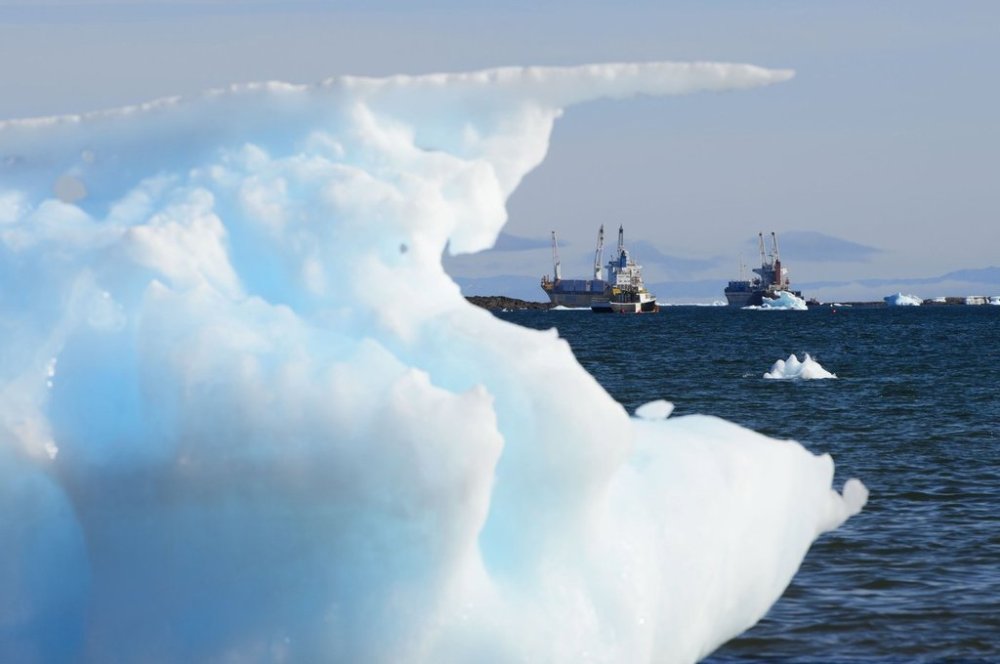Shipping companies call for better Arctic navigation tech as trips get tougher
Advertisement
Read this article for free:
or
Already have an account? Log in here »
To continue reading, please subscribe:
Monthly Digital Subscription
$0 for the first 4 weeks*
- Enjoy unlimited reading on winnipegfreepress.com
- Read the E-Edition, our digital replica newspaper
- Access News Break, our award-winning app
- Play interactive puzzles
*No charge for 4 weeks then price increases to the regular rate of $19.00 plus GST every four weeks. Offer available to new and qualified returning subscribers only. Cancel any time.
Monthly Digital Subscription
$4.75/week*
- Enjoy unlimited reading on winnipegfreepress.com
- Read the E-Edition, our digital replica newspaper
- Access News Break, our award-winning app
- Play interactive puzzles
*Billed as $19 plus GST every four weeks. Cancel any time.
To continue reading, please subscribe:
Add Free Press access to your Brandon Sun subscription for only an additional
$1 for the first 4 weeks*
*Your next subscription payment will increase by $1.00 and you will be charged $16.99 plus GST for four weeks. After four weeks, your payment will increase to $23.99 plus GST every four weeks.
Read unlimited articles for free today:
or
Already have an account? Log in here »
MONTREAL – Shipping companies are calling on the federal government to invest in Arctic infrastructure and navigation technology as climate change renders transport corridors more hazardous — all while traffic ramps up.
Northern waters need new port facilities, higher quality satellite imaging and modern mapping that charts the depth of the ocean floor, say a group of more than a dozen ship owners and transport companies.
“There’s a growing need for transportation in the Arctic,” said David Rivest, president of Desgagnés Transarctik, a shipping firm that supplies dozens of northern communities.

Infrastructure upgrades would help meet the expanding needs of northern communities and mining firms as well as the threat of foreign actors amid rising global tensions, according to the St. Lawrence Ship Operators association.
Longer, sturdier boat ramps offer one example of how improvements could ease the transport process for communities whose food, building materials and consumer items come primarily by ship.
“These ramps are essentially just gravel inclinations going from the water up to a beach landing area,” Rivest said. “They’re exposed to the tides.”
At high tide, transport tugs can haul barges up to the ramp. But at low tide, shallow water and rocks make landing tricky or impossible.
A new landing zone — in a nearby bay with better boat access and shelter from wind and storms, for example — would make the process much more efficient, Rivest said.
“For instance, in Kuujjuaq, a very important community in northern Quebec, we have to anchor four or five nautical miles away from the ramp. That means there’s a long transit between the ship and the beach area,” he said.
Efficiency is all the more crucial in areas with short seasonal windows for seaborne deliveries.
The Arctic shipping season typically runs from June through November. “But there’s certain locations where we can only deliver 45 days,” Rivest said.
“Sometimes it’s even less than that.”
Meanwhile, a retreat in Arctic sea ice has unleashed icebergs that can hamper ships but also opened up waterways to more boats, making passage more treacherous.
“Early this summer, we had a ship that was out west in the Northwest Passage, and I was completely surprised to find dozens of sailboats crossing west to east, meeting our ships in the area,” said Daniel Dagenais, CEO of NEAS Group, which hauls everything from diesel tanks to roof trusses to towns and villages across the Canadian Arctic.
A study out of the Université du Québec à Montréal found the number of boat trips into Canadian Arctic waters increased by nearly half to 466 between 2011 and 2024.
That steady increase in both shipping traffic and ice flows demands better navigation tech — weather tracking systems and satellite image processing, for example — shippers said.
As of May 2023, 15.8 per cent of Canadian Arctic waters had been “adequately surveyed,” while 44.7 per cent of its key navigational routes met that standard for bathymetry — topography, but for water bodies — according to the Canadian Hydrographic Service.
“With the warming temperatures, it’s a lot more volatile,” Rivest said of ice flows. “It’s moving around, it’s going into these main transit areas and then the ships need to take alternate courses.
“Compound that with the bathymetry that’s not up to date, you accentuate the risks for incidents,” he said.
The shipping association has welcomed Ottawa’s renewed focus on infrastructure projects and defence spending, which could have northern applications ranging from radar stations to housing. But precisely how the dollars in the recent federal budget will find their way to Arctic shipping remains uncertain.
“It all trickles down in the weeks and months that come afterwards, so that’s where we need more details,” said association executive director Saul Polo.
This report by The Canadian Press was first published Nov. 20, 2025.


